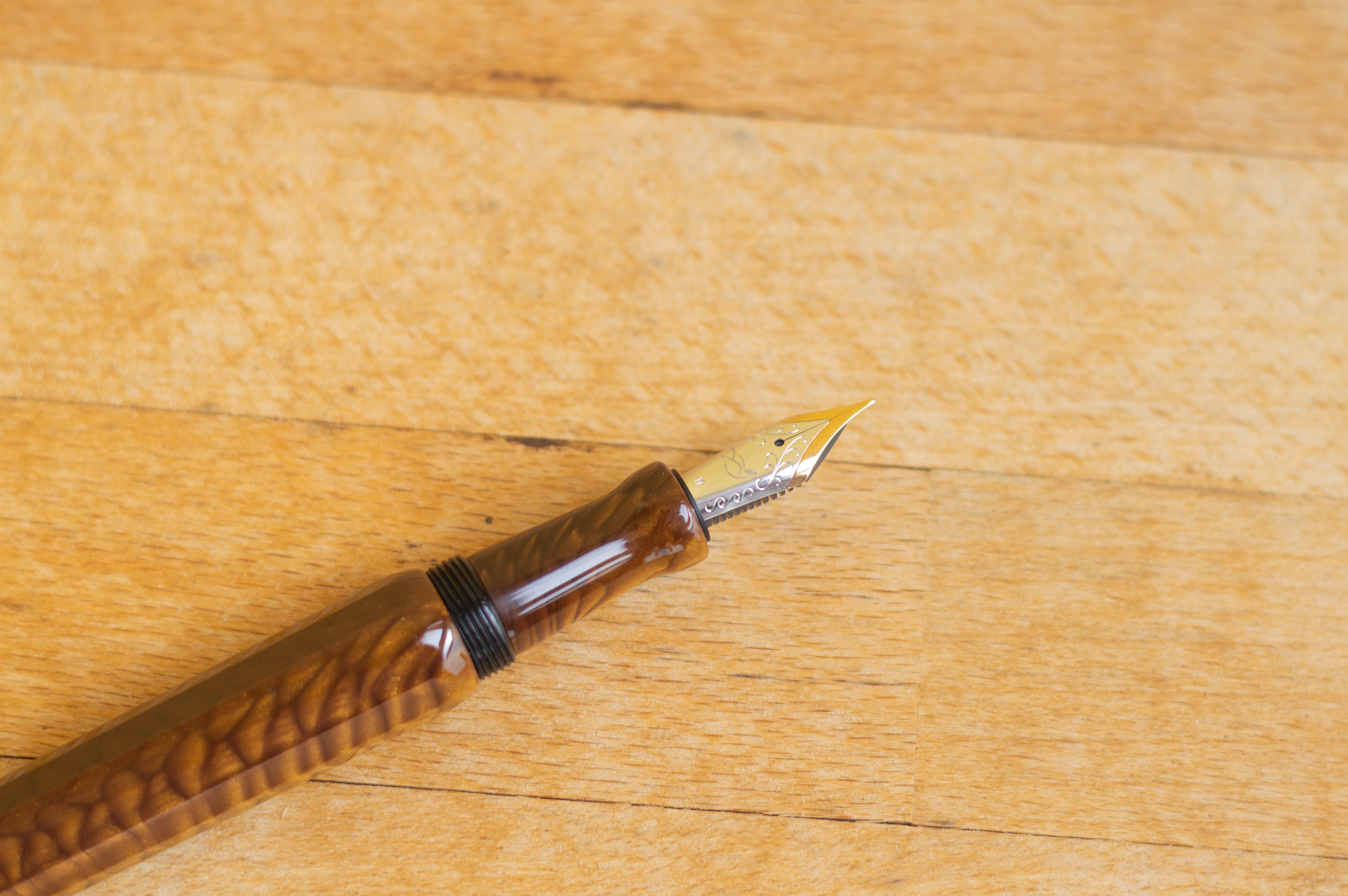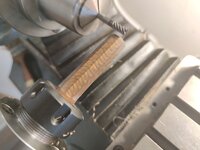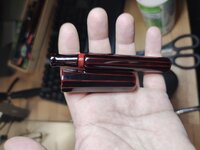Very beautiful pen !!!
You say ... " The most challenging part was the sanding and polishing." ... I can well understand why that is so.
How did you overcome the tendency for the corners to become more and more rounded during the sanding and polishing ?
Also, is there a practical (other than aesthetic) reason for doing different numbers of facets on the cap compared to barrel ?
I can think of one possible reason ... "hiding" of facet alignment issues when screwing on the cap. . Anything else ?
I notice that you did the same on this other pen you showed .....
Hi everyone, So....from where to start with this one. It's made from wood, Lignum Vitae, 10 facets on cap, 12 on barel. Sealed with Urushi, silver powder, a couple of layers for Tamenuri and gloss finish. The section is made from Ebonite, golden flakes and nashiji. The threads are made from...
www.penturners.org
With the threads on a separate piece ( ebonite ) you can do initial alignment at the time the ebonite piece is glued in.
But if the threads are multi-start, the alignment could change from one time to the next, depending on the thread details.
I guess this could be at least part of an answer to my question.
Final question - (until I think of more


), did you do the facets with a milling machine ?













